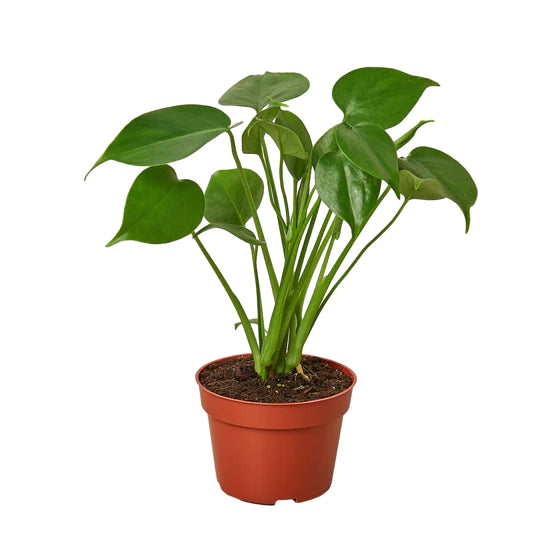Philodendron Monstera Split-Leaf Medium
Couldn't load pickup availability
-
Appearance: Monstera deliciosa is known for its large, glossy green leaves that develop distinctive splits and holes as they mature, giving them a unique, perforated appearance.
-
Native Habitat: It's native to the tropical rainforests of southern Mexico down to Panama.
-
Growth Habits: In its natural habitat, Monstera deliciosa grows as an epiphyte, meaning it grows on other plants (usually trees) but is not parasitic. It uses its aerial roots to attach to trees and absorb moisture.
-
Light Requirements: Monstera prefers indirect, bright light. It can tolerate some shade, but its leaves might not develop as many splits or holes if kept in low light.
-
Watering: It prefers the soil to be kept relatively moist but not waterlogged. Make sure to allow the top layer of soil to dry out between waterings. Overwatering can lead to root rot.
-
Propagation: Monstera can be propagated using stem cuttings. It's best to take a cutting that includes a node or two. You can root the cutting in water before transferring to soil.
-
Air-Purifying: Like many other indoor plants, Monstera deliciosa is believed to help purify the air, though it's essential to understand that plants' overall effect on indoor air quality is still a topic of ongoing research.
-
Toxicity: Monstera deliciosa is toxic if ingested. It contains calcium oxalate crystals which can cause irritation to the mouth, throat, and gastrointestinal tract. It's best to keep it away from pets and children.
-
Fruit: One of the unique aspects of Monstera deliciosa is its fruit, which looks a bit like a green, elongated cone covered in scales. The fruit is edible once ripe and is said to taste like a mix between banana, pineapple, and mango. However, the fruit must be fully ripe before consumption; an unripe fruit can cause irritation due to its high concentration of calcium oxalate.
-
Care: This plant benefits from regular misting, which helps mimic its natural tropical environment. It's also a good idea to occasionally wipe down the leaves with a damp cloth to remove dust.
Monstera deliciosa has become incredibly popular in interior decoration due to its unique foliage and relatively easy care requirements. It adds a touch of the tropics to any interior space!


Philodendron Monstera Split-Leaf Medium

